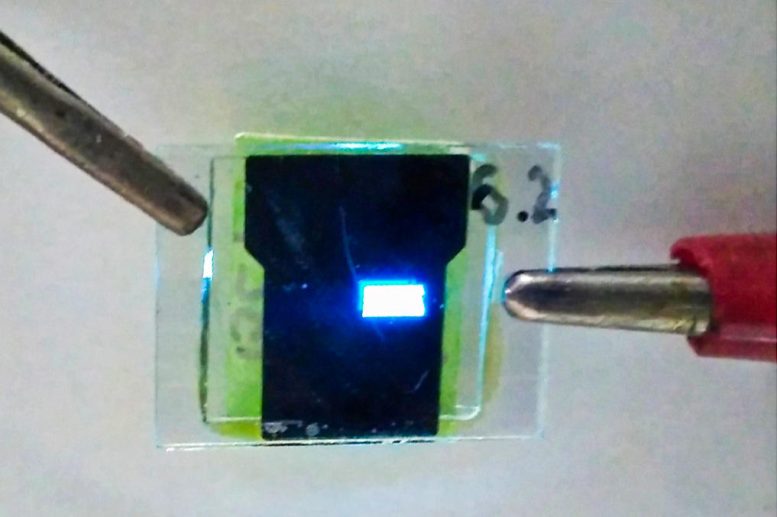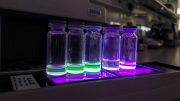
The new fluorophores may be utilized to develop new materials that will increase the brightness of displays on computers, TVs, and mobile devices.
Researchers have created fluorophores between 2.4 and 20 times more intense than analogs.
Scientists have created, synthesized, and analyzed a new class of fluorophores, which are luminous chemical compounds. These are the new bullet systems based on cyanopyrazine. According to research, the inclusion of cyanogroup compounds in fluorophores considerably boosts the efficiency of organic light-emitting diodes (OLED). This indicates they can be utilized to develop new materials to improve the brightness of screens used for smartphones, computers, and televisions. The researchers’ findings were recently published in the journal Dyes and Pigments.
The research was led by Egor Verbitskiy, the director of the Postovsky Institute of Organic Synthesis Ural Branch of RAS and a member of the Laboratory of Medical Chemistry and Advanced Organic Materials at the Ural Federal University. He states that physicists were aware that introducing cyanogroups to fluorophores can enhance the OLEDs’ properties and overall efficiency.

One of the assembled organic LEDs based on push-pull systems containing cyanopyrazine fragments. Credit: Ruslan Gadirov
“Therefore, we modified the pyrazine-based push-pull system with cyanogroup and studied how this affected the photophysical properties of the fluorophores and the performance of OLEDs based on it. The phenomenon of TADF, due to the peculiarities of the structure of the initial substance, did not arise, although there are prerequisites for it. However, it turned out that the introduction of a cyanogroup intensifies intermolecular interactions, as a result of which not individual molecules but complexes of molecules begin to fluoresce.”
He continues, “As a consequence, the increase in luminescence intensity was from 2.4 to 20 times, and the brightness of the emitted light was up to 75 times. Such results were shown by several prototype devices made by our colleagues and co-authors from Tomsk State University. It is also important that we used inexpensive and accessible compounds in our research,” says Egor Verbitskiy.
Chemists previously established that the pyrazine ring (also known as 1,4-diazine), a compound of nitrogen, hydrogen, and carbon with a strong electron-accepting effect, is one of the most promising compounds as an acceptor (attracting electrons) part in push-pull systems.
A study of the properties of a wide range of 1,4-diazine-based push-pull systems revealed that the addition of a benzene ring to the pyrazine cycle can improve the efficiency and brightness of the OLEDs produced. At the same time, some of the OLEDs tend to exhibit thermally activated delayed fluorescence (TADF). This is evidenced by the increase in fluorescence lifetime.
Scientists are continuing to work on the creation of new fluorophores.
Reference: “Impact of an ortho-cyano group on photophysical properties and performance of OLEDs based on D-A–A type pyrazine push-pull system” by Egor V. Verbitskiy, Ruslan M. Gadirov, Lubov G. Samsonova, Konstantin M. Degtyarenko, Alexander E. Kurtcevich, Elizaveta V. Sapozhnikova, Margarita V. Medvedeva, Tatyana S. Svalova, Alisa N. Kozitsina, Gennady L. Rusinov, and Valery N. Charushin, 12 September 2022, Dyes and Pigments.
DOI: 10.1016/j.dyepig.2022.110716









Be the first to comment on "20 Times More Intense: New Material Will Help Improve Phone and Television Displays"